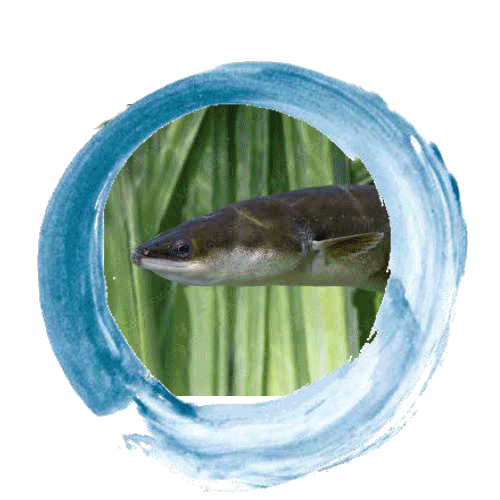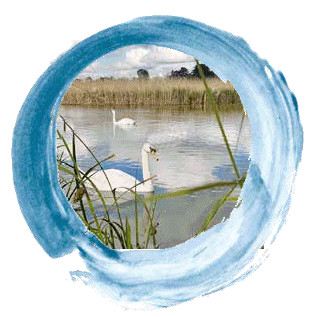
The Alresford Eel House
History and Habitat
A link to our agricultural and natural heritage
The Eel House is probably unique, although there are remains of something similar at Patshull Park in Staffordshire dating from the 18th century. This physical structure also helps us to engage with our agricultural heritage, and with the wonders of nature.
Engage with our agricultural heritage
In their 2014 book, Righton and Roberts recount historical descriptions of the upriver migration of elvers as being like dense rivers of fish, hundreds deep and tens of miles long. Fishers simply dipped a net into the river and scooped them out. They quote another (1902) source that on the Thames
they made an apparently endless black margin on either side of the river.

 To catch (mature) silver eels moving down river, people used eel bucks (large wicker baskets) which they lowered into the river for their catch. A single fisher would use one of these to take a supply, but there are also 19th century photographs (from Harleyford in Buckinghamshire and Bray in Berkshire) of large wooden structures built in a river with six such baskets in a row. Fishers would lower these into the river, raise them (a demanding task) when they were full, and remove the eels. Others worked by guiding the eels away from the river onto an area of shallow water where they were easily harvested: one of these on the River Stour was still operating in 2014.
To catch (mature) silver eels moving down river, people used eel bucks (large wicker baskets) which they lowered into the river for their catch. A single fisher would use one of these to take a supply, but there are also 19th century photographs (from Harleyford in Buckinghamshire and Bray in Berkshire) of large wooden structures built in a river with six such baskets in a row. Fishers would lower these into the river, raise them (a demanding task) when they were full, and remove the eels. Others worked by guiding the eels away from the river onto an area of shallow water where they were easily harvested: one of these on the River Stour was still operating in 2014.
Old Alresford Pond was created about 1199 and eels will soon have found their way to it. People still alive today recall many being caught there when they were young. Sadly, after 800 years Old Alresford Pond – although a Site of Special Scientific Interest - is contaminated, including runoff from agricultural fertilisers, and so becoming toxic to wildlife. The Eel House is a relatively recent arrival on the scene: it brought income to the River Keeper and his helpers and a satisfying meal.
Engage with the natural world
Our ancestors developed an intuitive knowledge of and empathy for the natural world, as they grew up in the countryside – without thinking much about it. Modern life makes it harder for people to experience nature in childhood.
Isabella Tree, in her book ‘Wilding’ (2018) suggests that experience of nature (or the lack of it) directly affects attitudes to the environment in later life. Children who spend time in green spaces experience the magic of the natural world. For millennia, human survival has depended on observing the weather, the stars and the species around us, empathising and cooperating with our environment.
The need to relate to the landscape and to other forms of life…is in our genes. Sever that connection and we are floating in a word where our deepest sense of ourselves is lost.
Eels – which lived here for thousands of years, and passed through the Eel House for 200 years - provide a direct opportunity to deepen our shared knowledge of the natural world. Recall the earlier section on ‘How eels live and die’, which outlined what we believe we know about the eel’s lifecycle. That account may have raised questions in your mind - including perhaps the challenges of conducting scientific research on this mysterious creature. Some of the many mysteries engaging scientists:
- Do they return to their mothers’ river, like salmon, or do they go wherever the current takes them?
- Why do eels raised in captivity never reproduce?
- Do glass eels use their magnetic compass to memorize the direction of tidal flows in the estuary they have arrived in, so they can use the tide to support their journey up river? (as Cresci reported in Communications Biology in 2019).
The Eel House is a unique piece of agricultural history, rescued from collapse by dedicated local people. You will rarely see eels in the nearby rivers, yet the Eel House is a local reminder of the mystery and wonder of the natural world.